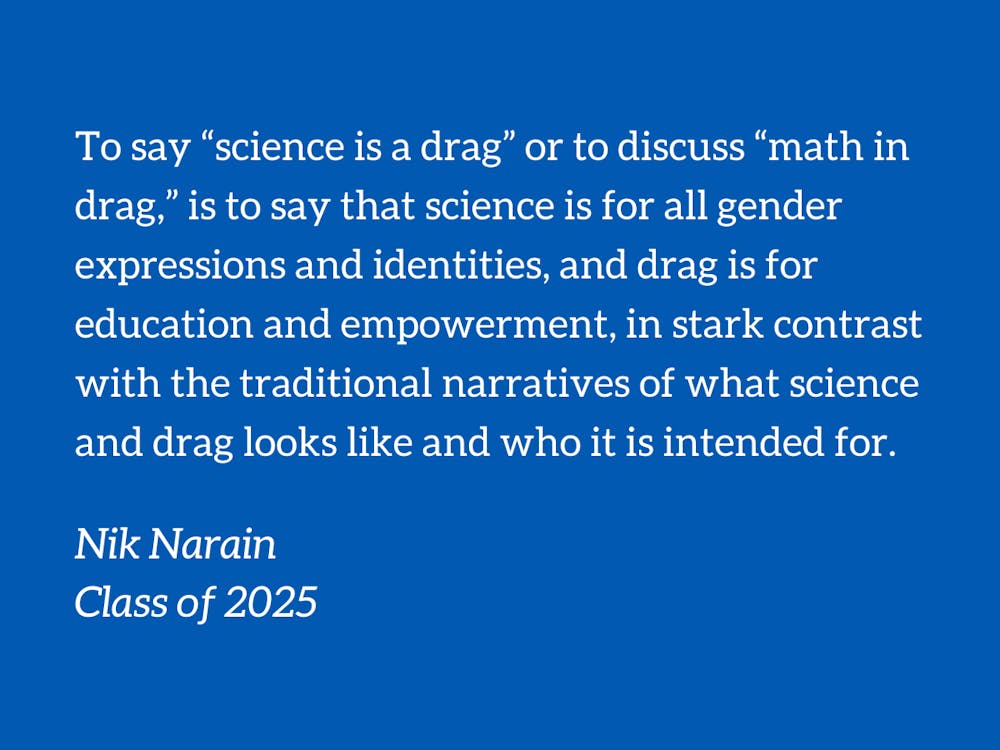The past decade has seen a surge of global collaborations between science and fashion. We’ve seen the rise of online stores selling science clothes ranging from quirky to couture, such as MySciGear’s seemingly infinite selection of quality nerd puns and Svaha’s specific emphasis on breaking gender stereotypes in STEM through their clothing. Science-inspired clothing has made its way to high fashion, like with Dr. Yuly Fuentes-Medel’s 2014 collaboration Descience, which fostered collaborations with scientists and fashion designers to bring “research to the runway.” Within its Media Labs and in collaboration with the Fashion Institute of Technology (FIT), MIT has been a pioneer in developing sustainable and high-tech methods for textile production such as 3D-printed fabrics. And just this past May, the Museum of Science in Boston celebrated its own sustainable fashion show.
As the founder of Boston Fashion Week, Jay Calderin, stated, “science and technology are the future of fashion.” Why not embrace it?
In the midst of this interdisciplinary SciArt explosion of dad humor and mycelium skirts (‘shroom leather, anyone?), there’s an intermediary space where science has arguably seen its most prominent boom in visibility: drag. Since 2020, The Royal Canadian Institute for Science has proudly supported the world’s first science-themed drag show, Science is a Drag, an annual show made by and for queer people to create a community where people can share and engage with science in an inclusive and authentic manner. Through lip-syncs, stand-up, and live science demonstrations, the show’s team of expert science communicators has won several global awards for their intersectional SciComm (science communication) work. Science-themed drag events for all ages have since grown increasingly popular, even here in Durham at local drag queen Stormie Daie’s “Science with Stormie” shows.
Outside of in-person events, many science drag artists have utilized TikTok and Instagram as their primary platform, such as Pattie Gonia’s environmental activism and Anna Lytical’s coding education. Most notably, drag queen, online math communicator and competitor on the first season of Canada’s Drag Race Kyne Santos (known mononymously as Kyne) published the first-ever book combining STEM and drag. "Math in Drag" draws upon a combination of math history lessons, explainers, and personal anecdotes as a drag queen to embrace math’s inner beauty in a unique way. "Math in Drag" was called a “spectacle” by the Johns Hopkins University Press and an excerpt from the book was featured in the popular science podcast and magazine Science Friday.
Drag is already a highly contested art form, with several U.S. states passing legislation to restrict or ban drag altogether. Critics have called drag “threatening and vile” for children, and politicians have designed laws with vague enough wording to ban many forms of nonconforming gender expression, even in a non-drag or performance-related context. What does it mean for drag to be used as science education if a loud group of Americans doesn’t even want drag near their children? Is “wearing” and “performing” science a valid enough form of SciComm?
While I don’t think science drag is on the same level of educational attainment as, say, a PBS Nova documentary or a well-crafted museum exhibit, I think the purpose extends into something far more fundamental. That is, incorporating scientific concepts and scientific practices in fashion, dance, performance, etc., offers a whole new way of reconciling and conceptualizing the fact that science can not only be beautiful, but glamorous, desirable, something worthy of being flaunted. That science can be colorful, humorous, and over-the-top if needed. Science is a process as equally as it is a product. Why not have fun and look hot while doing it?
As both drag and science become increasingly politicized, sometimes making a statement about drag and/or science itself is as important as more traditional forms of media-based education. To say “science is a drag” or to discuss “math in drag,” is to say that science is for all gender expressions and identities, and drag is for education and empowerment, in stark contrast with the traditional narratives of what science and drag looks like and who it is intended for.
People like to think that SciComm is a watering-down of “the hard stuff” like diluting a cup of strong coffee, when in reality SciComm is about creating something palatable, strong, and exciting, like an espresso machine (if you don’t like coffee, I apologize if this metaphor doesn’t apply). If the goal of SciComm is not just to improve the dissemination of scientific information, but to promote excitement and engagement for science itself, what better way to do that than through drag, which enables performers to celebrate science on such a personal level? To slay nerd fashion with such confidence and curiosity, whether it be through drag, at a fashion school, or even in everyday wear, is one small but powerful part of the future of SciComm.
Nik Narain is a Trinity senior. His pieces typically run on alternate Saturdays.
Get The Chronicle straight to your inbox
Sign up for our weekly newsletter. Cancel at any time.

